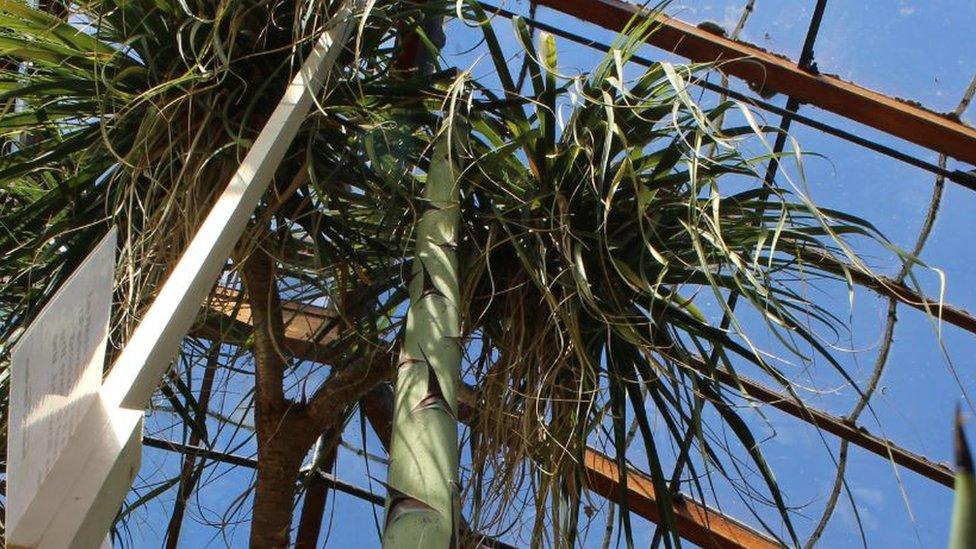Rare moonflower dye created in Cambridge after flower death
- Published
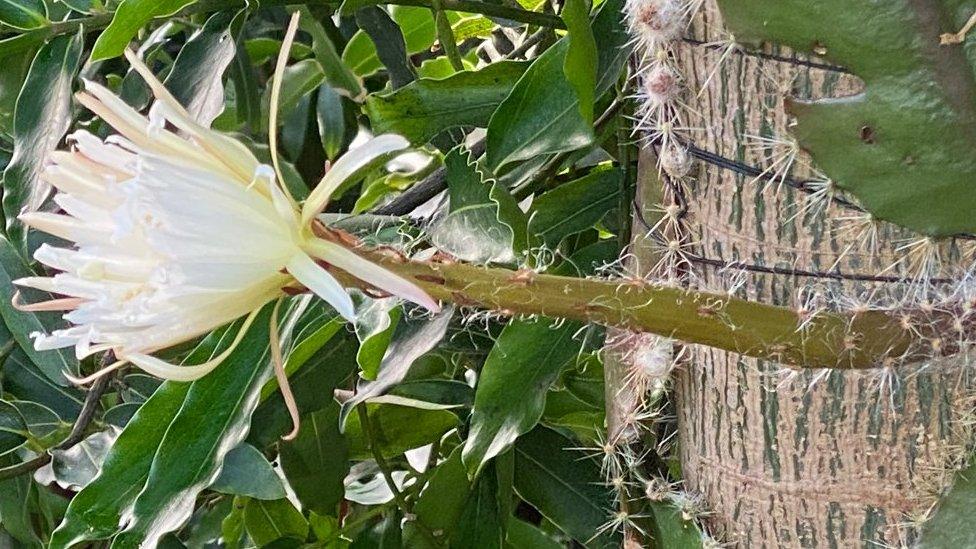
The first of the moonflowers started to show its beauty at about 13:30 GMT on 1 February
The flower from a rare Amazonian cactus that blooms only once a year - dying after just 12 hours - has been used to create a unique dye, after its death.
The moonflower, or Strophocactus wittii, is part of the collection at Cambridge University Botanic Garden.
The first of three flowers bloomed on 1 February.
When it died, pigment was extracted by the garden's artist-in-residence to create the unique colour, now known as Moonflower Yellow.
The university garden's moonflower has caused a stir since it bloomed in captivity in February 2021, when it was believed to be the first time one had flowered in the UK.
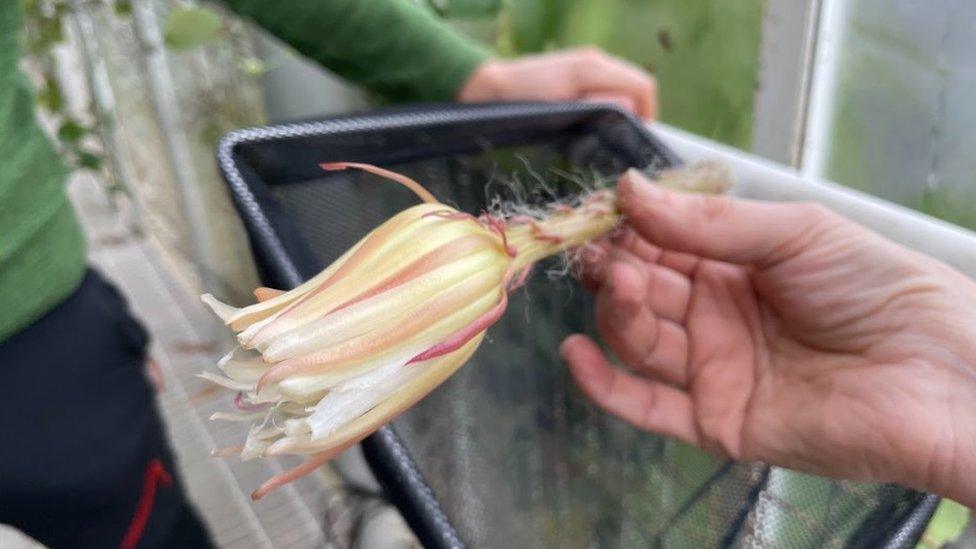
The first flower was harvested once it died and is being studied
This year the plant produced four potential blooms - one died - but the other three flowered, the last showing its beauty on Friday.
Staff are keen to learn as much as possible from the plant and scientists have been studying the deceased blooms, as has the garden's artist.
Nabil Ali heated a mixture of moonflower petals in a vodka-water mix with grapefruit seed and added a potash to create a light yellow tint, which he has now named Moonflower Yellow.
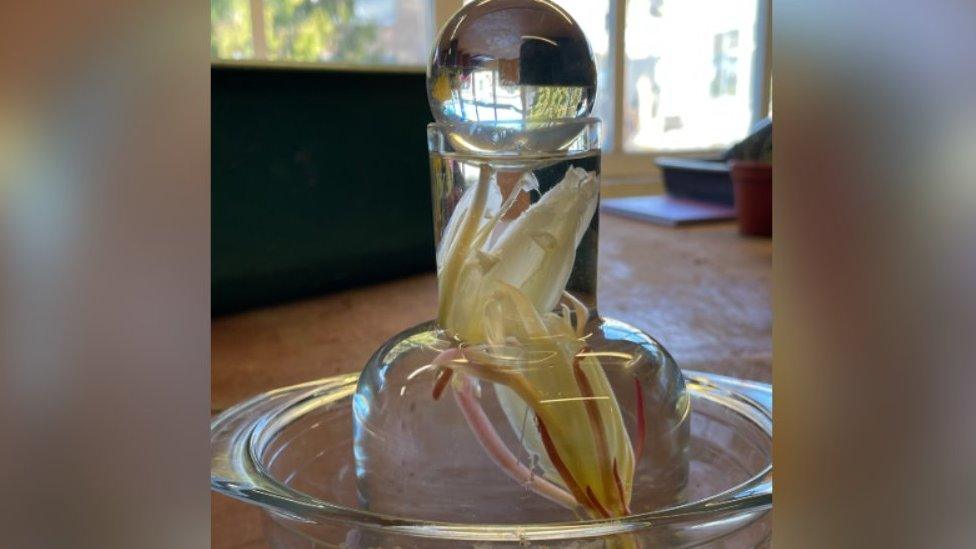
Petals were steeped in a solution to enable a dye to be extracted
A spokeswoman for the garden said: "While working with the moonflower, Nabil said that although the flower looks beautiful, it was one of the most stubborn plants he has ever worked with to extract a dye from. However, his hard work has paid off.
"Moonflower Yellow will be added to the catalogue of dyes Nabil is creating from a selection of the garden's plant collection of over 8,000 species of plants."
She added: "He is planning to create an exhibit of the preserved petals from the moonflower along with the colour he's created which will be on display in the glasshouses within the next few weeks."
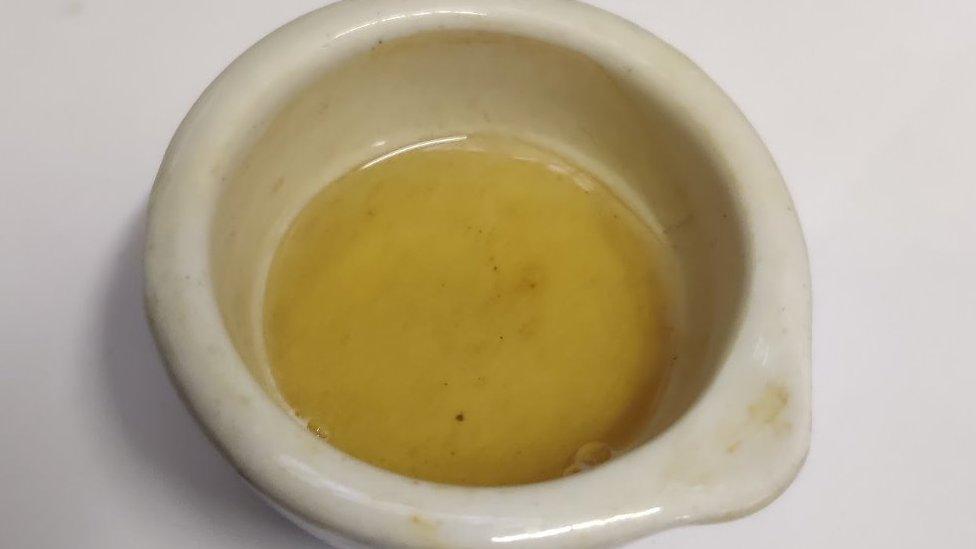
Moonflower Yellow was extracted from the flower
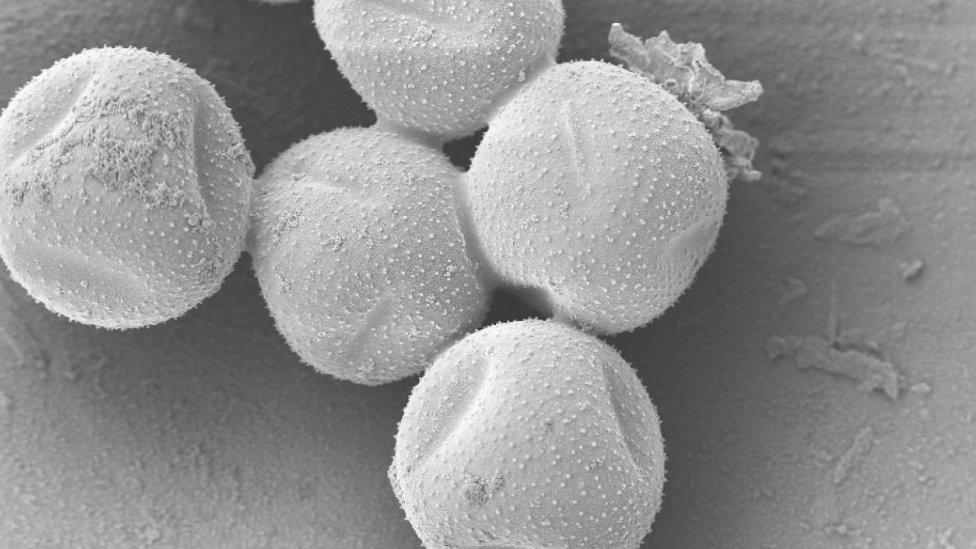
Pollen, and other parts of the plant have been put under the microscope by scientists
While the moonflower is not rare in the wild, it is rare in cultivation, a garden spokesperson said.
This species of Strophocactus is grown in 30 botanic gardens worldwide and its beauty is short-lived, as flowers start to die after just 12 hours.
They are keen to point out that their plant is not the same as other flowering cacti which have the same common name of moonflower.
"The name moonflower is given to a lot of cacti, external which people often have flowering at home," senior horticulturist Kathryn Bray said.
"This plant - Strophocactus wittii - is definitely rare in the UK and in botanic gardens in general, outside its native habitat in the Amazon, so it's important to always go by the Latin name."

Follow East of England news on Facebook, external, Instagram, external and X, external. Got a story? Email eastofenglandnews@bbc.co.uk , externalor WhatsApp 0800 169 1830
Related topics
- Published5 February 2024
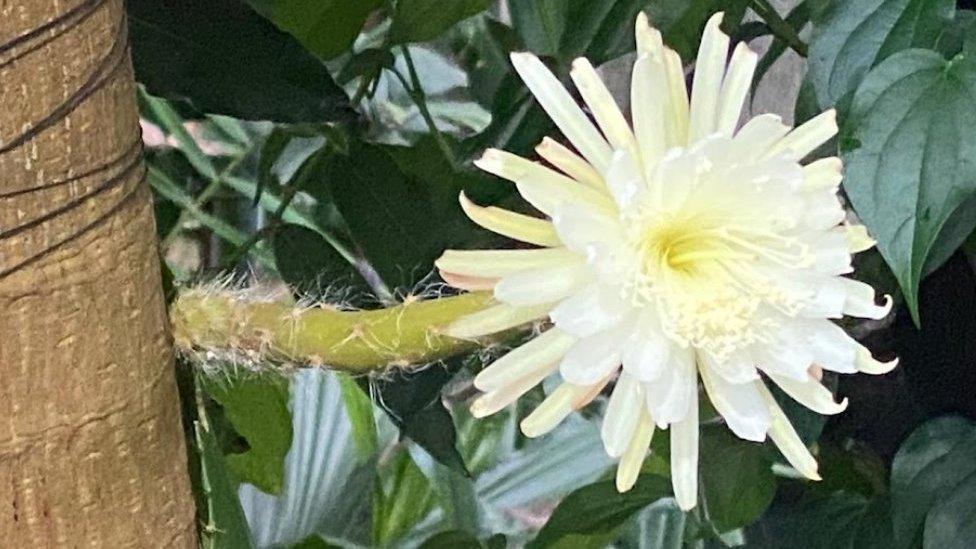
- Published16 October 2023

- Published19 March 2023
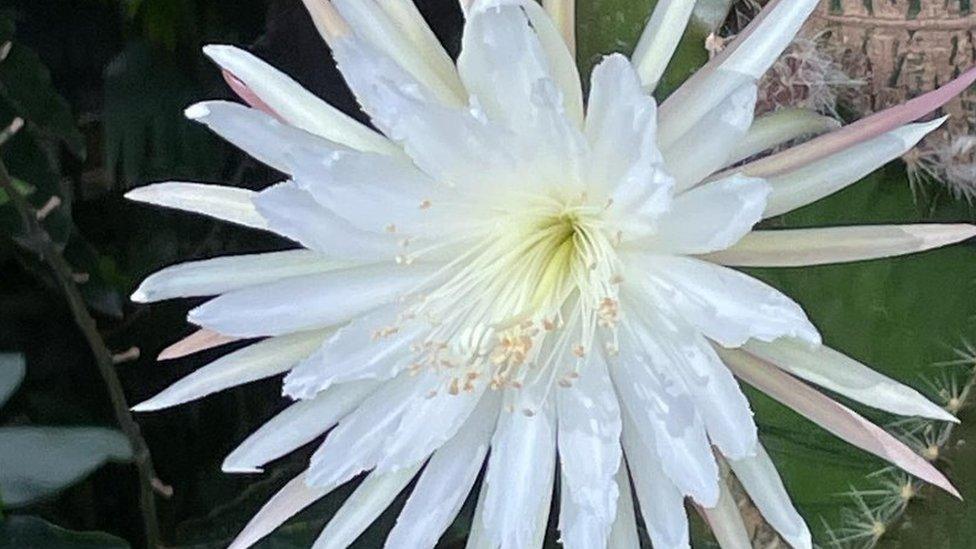
- Published13 March 2023

- Published20 February 2021
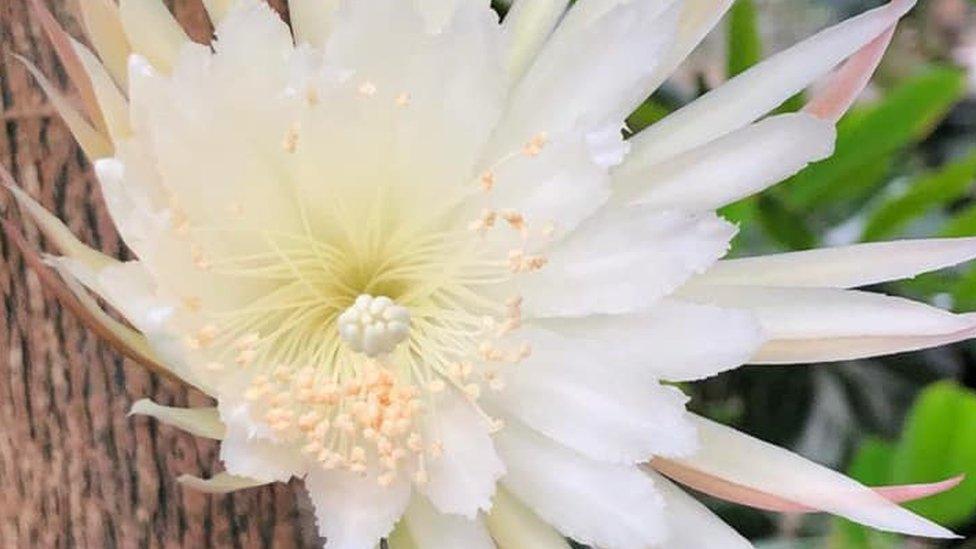
- Published20 February 2021

- Published11 February 2021
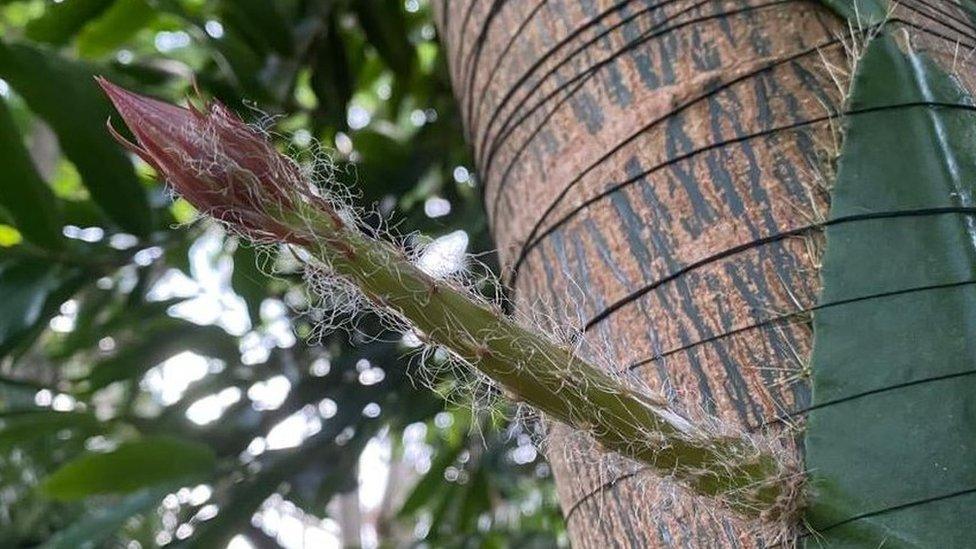
- Published10 September 2019
